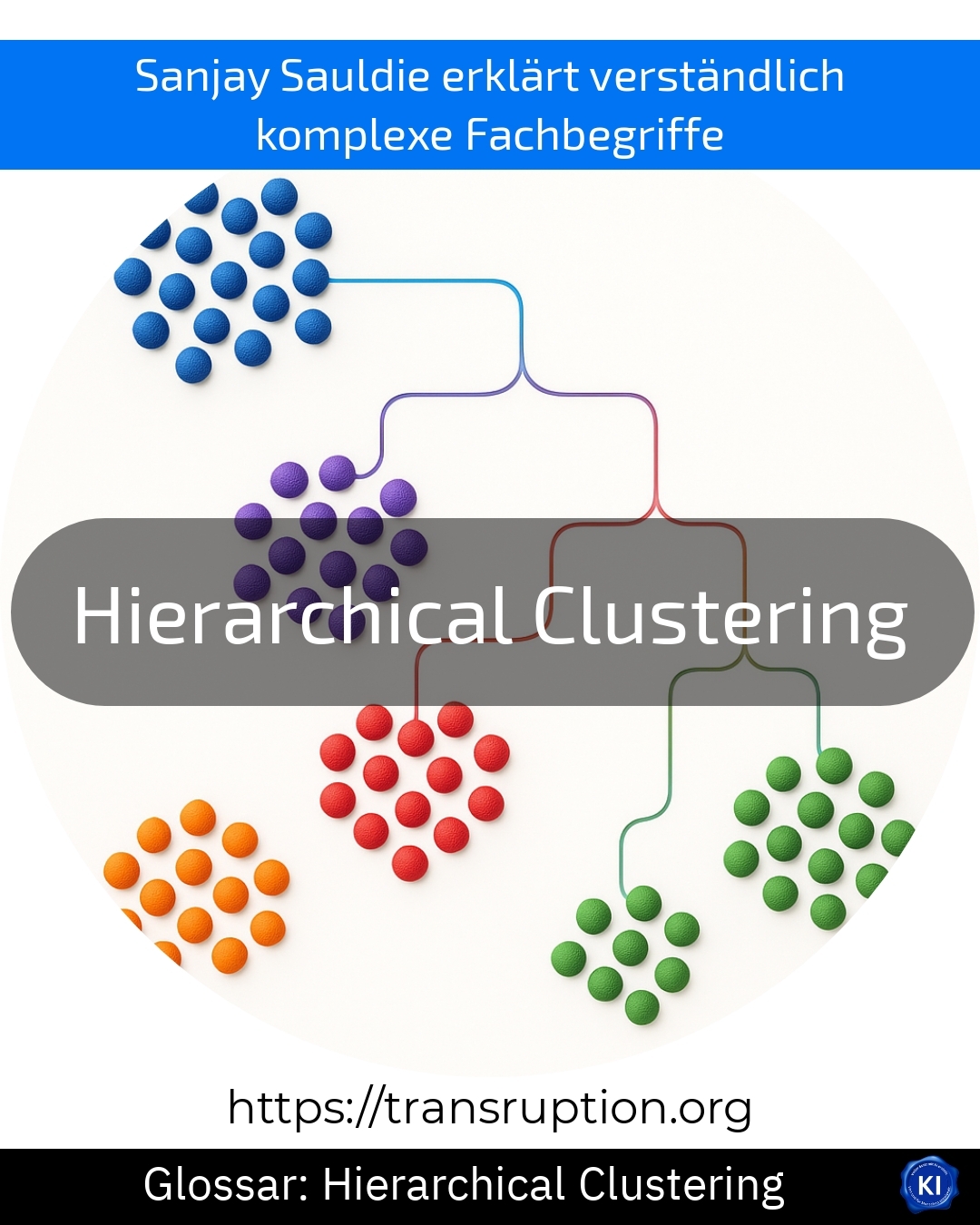Hierarchical clustering is an important term in the fields of big data, smart data and artificial intelligence. It is a method that can be used to group large amounts of data in a meaningful way. The aim of hierarchical clustering is to summarise similar data points into groups, known as clusters.
Imagine you have thousands of customer data and want to find out which customers behave similarly. With Hierarchical Clustering, a computer programme first searches for the most similar customers and groups them together. The second most similar groups are then linked together until all the data is organised in a large hierarchy of groups - like a family tree that branches out further and further.
The result is a clear structure in which each element belongs to a specific cluster. Companies use this, for example, to better understand their target groups and create customised offers.
An illustrative example: An online shop wants to analyse its product reviews. Hierarchical Clustering automatically recognises similar review texts and groups them together. This allows the shop to immediately see which products are often praised for their high quality and which often receive similar criticism. This saves time and helps to make better business decisions.















